Seoureseo Duljjaero Jalhaneunjip (The Second Best in Seoul) (서울서둘째로잘하는집)
1.3Km 2020-06-16
122-1, Samcheong-ro, Jongno-gu, Seoul
+82-2-734-5302
The delicious, sweet, red-bean soup called “Danpatjuk” in Korean and served at “The Second Best in Seoul” has been an all-time favorite since it opened in 1976. Not only the exterior, but the interior as well, is very simple and modest, similar to a teahouse in the '70s. This does not keep people from coming back because the unforgettable taste of the sweet red-bean soup makes them return again and again.
“The Second Best in Seoul” was originally opened as a teahouse for traditional Korean medicinal tea; sweet red-bean soup being one of the main specialties on their menu list. But, nowadays, sweet red-bean soup has become the most popular menu item. Sweet red-bean soup can be enjoyed as a light meal because it fills you up quickly. In addition, the chestnuts, gingko nuts, red beans, and glutinous rice cake that are in the thick red-bean soup provide good nutrition.
TIP: The name is very special, right? “The Second Best in Seoul” was named by their modest mind of making food with utmost sincerity.
Insadong Geujip (인사동그집)
1.3Km 2020-04-24
3, Insadong 12-gil, Jongno-gu, Seoul
+82-2-737-0575
Insadong Geujip, located in the famous neighbourhood of Insadong, is a Korean fusion restaurant that is particularly well known for its traditional, yet unique interior. Along with “Insadong Seafood Rice,” and “Insadong Geujip On Rice”, diners can find a range of delicacies including Hanbang
Bossam (Herbal Napa Wraps with Pork), Savory Seafood & Spring Onion Pancake, and Kimchi Parae Pancake on the menu.
The restaurant's specialty, Geujip On Rice, a sort of Bibimbab made with a variety of seafood, vegetables and edible flowers and mixed together with rice and a red pepper paste called gochujang. The basic serving size is large enough to feed two.
The restaurant is housed in an old hanok (Korean traditional house) and has been carefully renovated to preserve the house’s traditional feel. Indoor lights wrapped with hanji, Korean traditional paper, shine a soft glow over the entire dining area and add to the overall ambience.
Keungiwajip (큰기와집)
1.3Km 2021-09-27
62, Bukchon-ro 5-gil, Jongno-gu, Seoul
+82-2-722-9024
It’s a 2018 Michelin Guide restaurant. The best menu at this restaurant is soy sauce marinated crab. This Korean dishes restaurant is located in Jongno-gu, Seoul.
Galerie des couteaux (칼 갤러리)
1.3Km 2020-04-30
7, Insadong 9-gil, Jongno-gu, Seoul-si
+82-2-735-4431
La seule boutique spécialisée dans les couteaux en Corée, cette galerie d’Insadong abrite plus de 6 000 couteaux du monde entier. Cela inclus des couteaux traditionnels coréens, japonais, chinois, des couteaux décoratifs, des couteaux réalisés par des artistes célèbres et des couteaux utilisés dans des films. Il y a une grande variété de couteaux aussi bien pour des utilités quotidiennes que pour des fins de décoration. Les clients qui commandent des couteaux peuvent également observer tout le processus de fabrication.
Onmaeul (온마을)
1.3Km 2021-03-22
127, Samcheong-ro, Jongno-gu, Seoul
+82-2-738-4231
A place that sells dishes made with beans, which are good for the health. This restaurant's signature menu is pureed soybean stew. This Korean dishes restaurant is located in Jongno-gu, Seoul.
Musée d'arts folkoriques de Gahoe (가회민화박물관)
1.3Km 2020-05-12
17, Bukchon-ro 12-gil, Jongno-gu, Seoul-si
+82-2-741-0466
Ouvert en 2002, Gahoe musée présente des expositions, peintures populaires et les amulettes qui reflète le style de vie et les souhaits du peuple coréen depuis les temps anciens.
Intérieur de la galerie Hanok, les visiteurs peuvent se plonger dans les traditions de la Corée. Vous trouverez des tableaux anciens du peuple, des peintures des croyances religieuses, et des tuiles en forme d'êtres humains ou des gobelins. Vous trouverez également des paravents d'amulettes et de voir la sagesse des gens dans l'ancien temps pour surmonter les moments difficiles grâce à une variété d'amulettes.
Imun Seolnongtang (이문설농탕)
1.3Km 2022-01-03
38-13, Ujeongguk-ro, Jongno-gu, Seoul
+82-2-733-6526
Imun Seolnongtang has been serving its hearty seolleongtang for over a hundred years since it first opened in 1907. Even its name has a long history: the word imun comes from Imun-gol, the now-obsolete name of the restaurant’s location, and seolnongtang, an old variation of the word seolleongtang. During the Japanese colonial rule, the restaurant’s regular customers included Gijeong Son, the marathon gold-medalist at the 1936 Berlin Olympics. To make the rich seolleongtang broth, beef meat and bones are simmered for more than 15 hours. Try putting rice and minced green onion in your seolleongtang for a warm and tasty experience. Kkakttugi (diced radish kimchi), provided as a side dish, is also delicious.
Hall de Jungmyeongjeon (중명전)
1.3Km 2024-12-18
41-11, Jeongdong-gil, Jung-gu, Seoul-si
+82-2-752-7525
Le Hall Jungmyeongjeon est situé à côté du théâtre Chongdong. On peut y accéder facilement en longeant le mur de pierre du Palais Deoksugung. Ce bâtiment de trois niveaux de style occidental, conçu par l’architexte russe Seredin Sabatin, a accueilli la bibliothèque impériale entre 1897 et 1901. Il était connu à l’origine sous le nom de Suokheon.
Après l’incendie du Palais Deoksugung, le Hall Jungmyeongjeon est devenu le bureau principal de l’empereur Gojong pour y discuter des affaires nationales et y accueillir les dignitaires étrangers. Ce bâtiment a également été le témoin des heures les plus tragiques de l’histoire, avec la signature de l’infâme traité de Eulsa, instaurant le protectorat entre le Japon et la Corée.
Le Hall Jungmyeongjeon se trouvait à l’origine dans l’enceinte du Palais Deoksugung, mais il a été ensuite séparé du palais lorsqu’un mur de pierre a été construit entre les deux. Il présente un style architectural coréen moderne, mais malheureusement, il a perdu une grande partie de sa structure originale à l’exception de son extérieur à cause d’un incendie en 1925. Après la libération du joug japonais le 15 août 1945, le Hall Jungmyeongjeon a eu différents usages. En septembre 2006, la propriété du Hall Jungmyeongjeon est passée à l’Administration des Biens Culturels, et il a été classifié comme appartenant au Palais Deoksugung en tant que Site Historique n° 124 en février 2007.
Samwon Ilsik (삼원일식)
1.3Km 2021-04-01
32, Mugyo-ro, Jung-gu, Seoul
+82-2-777-3680
This is a Japanese cuisine located in Cheonggyecheon Stream, Seoul. This restaurant is one of Mugyo-dong's best kept secrets. The best menu at this restaurant is codfish stew.
Nwijo(뉘조)
1.3Km 2024-12-11
27, Insadong 14-gil, Jongno-gu, Seoul
+82-2-730-9311
Nwijo (뉘조) is a Korean restaurant specializing in wild vegetable cuisine. The name ‘Nwijo’ means ‘the god of the silkworm,’ and likens wild vegetables to silkworms in that both can be eaten in their entirety. The restaurant serves original full-course Korean meals that are prepared using hundreds of kinds of wild vegetables, including special seasonal vegetables.
A typical full-course meal starts with delicious pumpkin porridge, followed by seasoned wild vegetables, root vegetable ssam (condiments wrapped in vegetable leaves), slices of boiled meat, and steamed lotus leaf-wrapped rice served with jjigae (Korean stew) and various side dishes. This kind of traditional feast is pleasing to both the eye and the palate and is topped off with sikhye (traditional sweet rice drink). Lunch specials are also available.
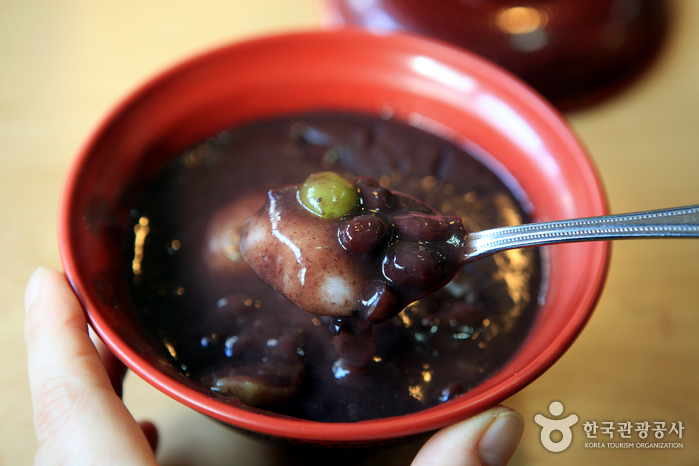
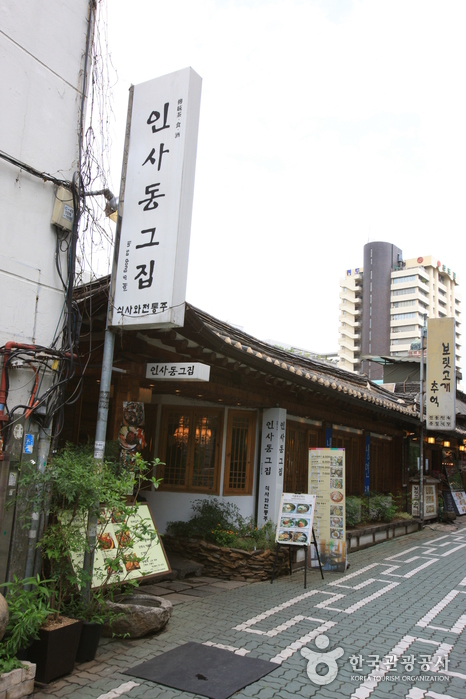
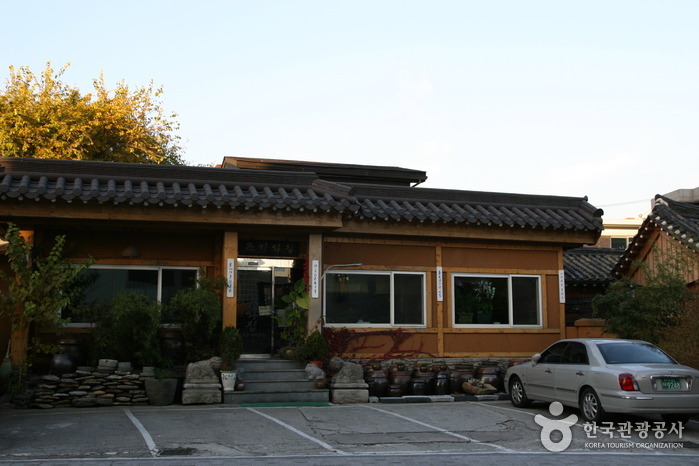
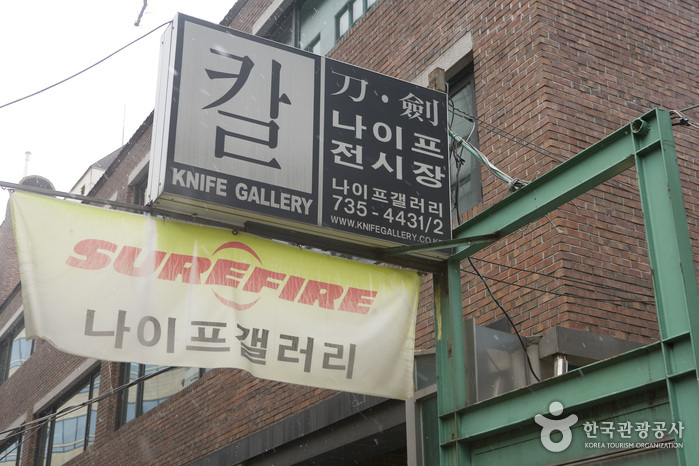

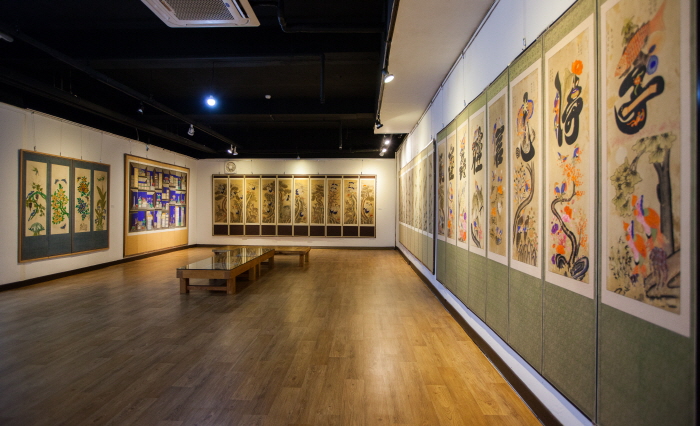
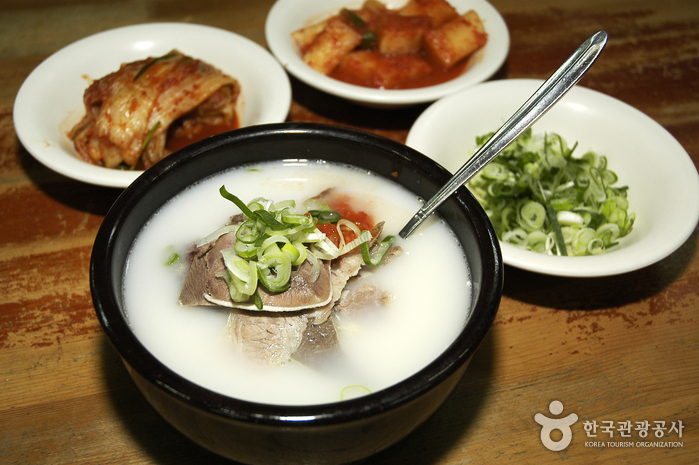
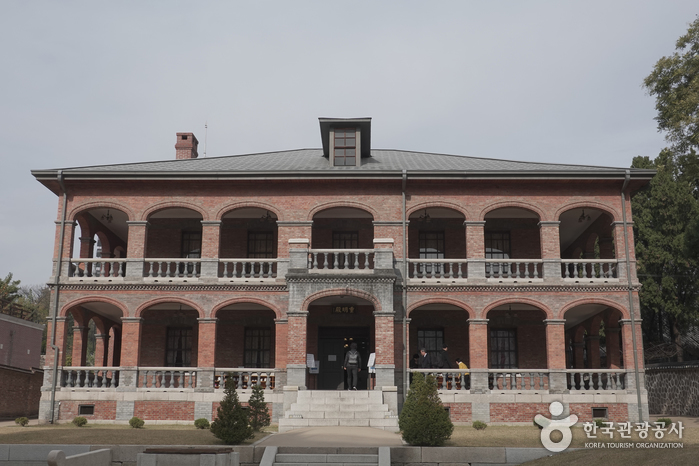
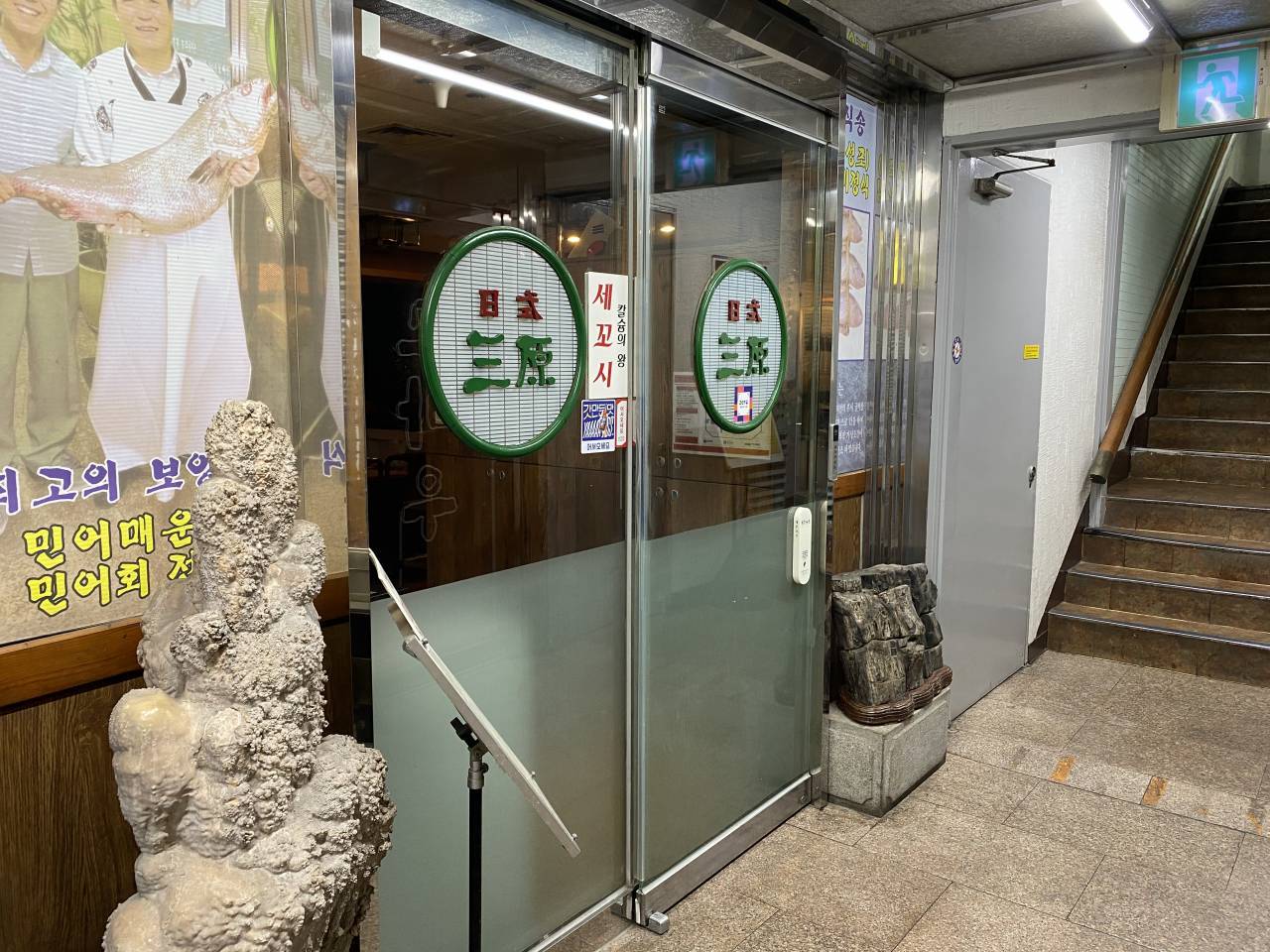
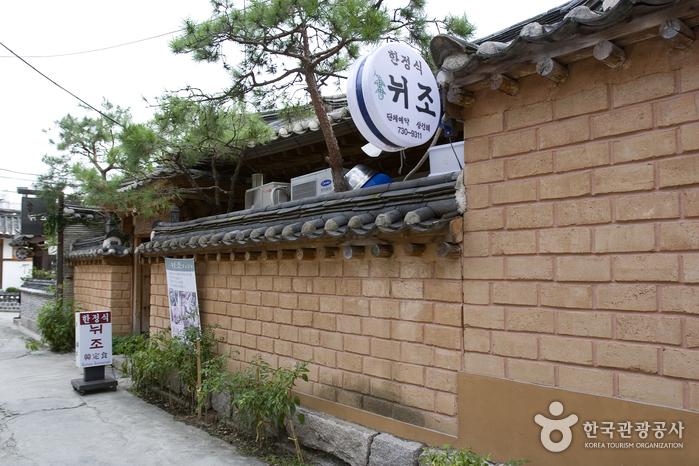
 Français
Français
 한국어
한국어 English
English 日本語
日本語 中文(简体)
中文(简体) Deutsch
Deutsch Español
Español Русский
Русский